Conrad Gesner
Biography
|
|
EUGENE M. MCCARTHY, PHD
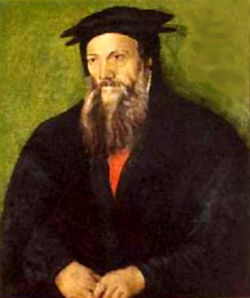 Conrad Gesner
Conrad Gesner(1516–1565)
Conrad Gesner (1516–1565). Renaissance Swiss naturalist, called the “German Pliny,” one of the leaders of a new scientific movement that emphasized observation and accurate description.
Both Gesner and his longer-lived contemporary Ulisse Aldrovandi (Gesner was only 49 years old when he died of plague) belonged to the generation of scholars who revived the ancient practice of studying the natural world by means of direct observation.
A professor at the Carolinum (the precursor of the University of Zürich), Gesner liked large projects. He single-handedly wrote a Greek dictionary, then a catalog of all authors who had ever written in Latin, Greek or Hebrew, together with a listing of their works (Bibliotheca universalis, 1545–1549). He also created Mithridates de differentis linguis (1555), an account of approximately 130 different languages. In addition, Gesner wrote voluminously about plants, although most of his botanical works were published posthumously.
From Historia animalium:
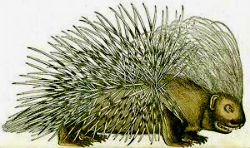
|
| Porcupine |
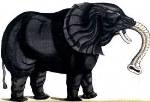
|
|
Elephant |
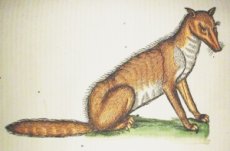
|
| Fox |
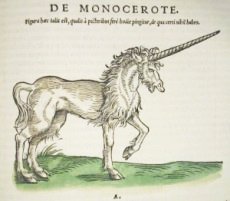
|
| Unicorn |
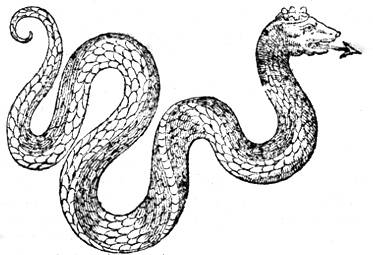
|
| Basilisk |
His magnum opus, however, was the Historia animalium ("Accounts of Animals"), published at Zürich in 1551–1558, a 4,500-page encyclopedia of animals, now regarded as the starting point of modern zoology. It was also the first printed work to include illustrations of fossils.
In it, Gesner attempted to list and describe all of the world's animals. He tries not only to give an account of animals as denizens of the natural world, but also to convey their place within literary tradition. There are many anecdotes, and the names of animals are given in various languages. Knowledge derived from ancient sources, in particular Aristotle, Pliny, Aelian, and the Old Testament, was combined with folklore and with information from medieval scholars such as Albertus Magnus.
The Historia animalium contains many accounts of mythical creatures. For example, the basilisk and unicorn are discussed (see figures right) alongside real animals such as foxes and porcupines (right), and rhinoceroses (shown below). Gesner also describes strange beasts that seem to reside in the gray zone somewhere between fiction and reality, such as the bizarre jumart, an alleged cross between horse and cow.
Still, Gesner did place a new emphasis on observation and accurate description that had been lacking in the works of earlier naturalists, who largely accepted whatever had been passed on to them from the ancients. If this new approach had not given a lasting value to Gesner's work, we might not otherwise have been sufficiently aware of him today to shake our heads at his gullibility.
Two interesting facts about Conrad Gesner
- In 1567, Gesner gave the earliest known description of a pencil.
- Gesner was the first scholar to describe the brown rat (Rattus norvegicus) in Europe.
Notes:
- Dates of birth and death: 26 March, 1516 — 13 December, 1565.
- Gesner was also known as: Konrad Gessner, Konrad Geßner, Conrad Gessner, Conrad Geßner, Conrad von Gesner, and Conradus Gesnerus.
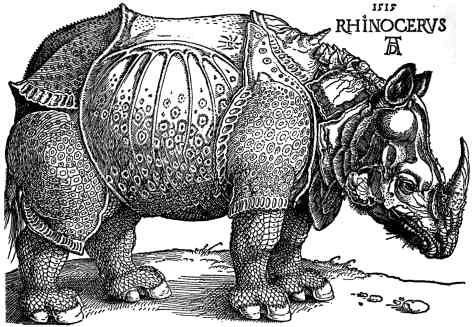
|
| Albrecht Dürer's famous rhinoceros appeared in Conrad Gesner's Historiae animalium (although its date of creation predates Gesner's birth). |
Conrad Gesner - Macroevolution.net